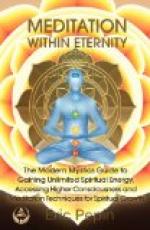Balzac expresses this view in all he says and does. “All we are is in the soul,” he says, and the perfection or the imperfection of what we externalize, depends upon the development of the soul.
It is this marvelously developed inner vision that makes marriage, on the sense-conscious plane, which is the plane upon which we know marriage as it is to-day, objectionable to Balzac.
His spirit had already united with its spiritual counterpart, and his soul sought the embodiment of that union in the flesh. This he did not find in the perfection and completeness which from his inner view he knew to exist.
Barriers of caste, or class; of time and space; of age; of race and color; of condition; may intervene between counterparts on the physical plane; nay, one may be manifesting in the physical body and the other have abandoned the body, but as there is neither time nor space nor condition to the spirit, this union may have been sought and found, and reflected to the mortal consciousness, in which case marriage with anything less than the one true counterpart would be unsatisfactory, if not altogether objectionable.
With this view in mind, Seraphita becomes as lucid a bit of reading as anything to be found in literature.
Seraphita is the perfected being—the god into which man is developing, or more properly speaking, unfolding, since man must unfold into that from which he started, but with consciousness added.
Everywhere, in ancient and modern mysticism, we find the assumption that God is dual—male and female. The old Hebrew word for God is plural—Elohim.
Humankind invariably and persistently, even though half-mockingly, alludes to man and wife as “one”; and men and women speak of each other, when married, as “my other half.”
That which persists has a basis in fact, and symbolizes the perfect type. What we know of marriage as it is to-day, proves to us beyond the shadow of a doubt, that the man-made institution of marriage does not make man and woman one, nor insure that two halves of the same whole are united. The highest type of men and women to-day are at best but half-gods, but these are prophecies of the future race, “the man-god whom we await” as Emerson puts it. But that which we await is the man-woman-god, the Perfected Being, of whom Balzac writes in Seraphita.
It has been said that Madame Hanska, whom the author finally married only six months previous to his death, was the original of Seraphita, but it would seem that this great affection, tender and enduring as it was, partook far more of a beautiful friendship between two souls who knew and understood each other’s needs, than it did of that blissful and ecstatic union of counterparts, which everywhere is described by those who have experienced it, as a sensation of melting or merging into the other’s being.
Seraphita is the embodiment, in human form, of the idea expressed in the world-old belief in a perfected being; whose perfection was complete when the two halves of the one should have found each other.




